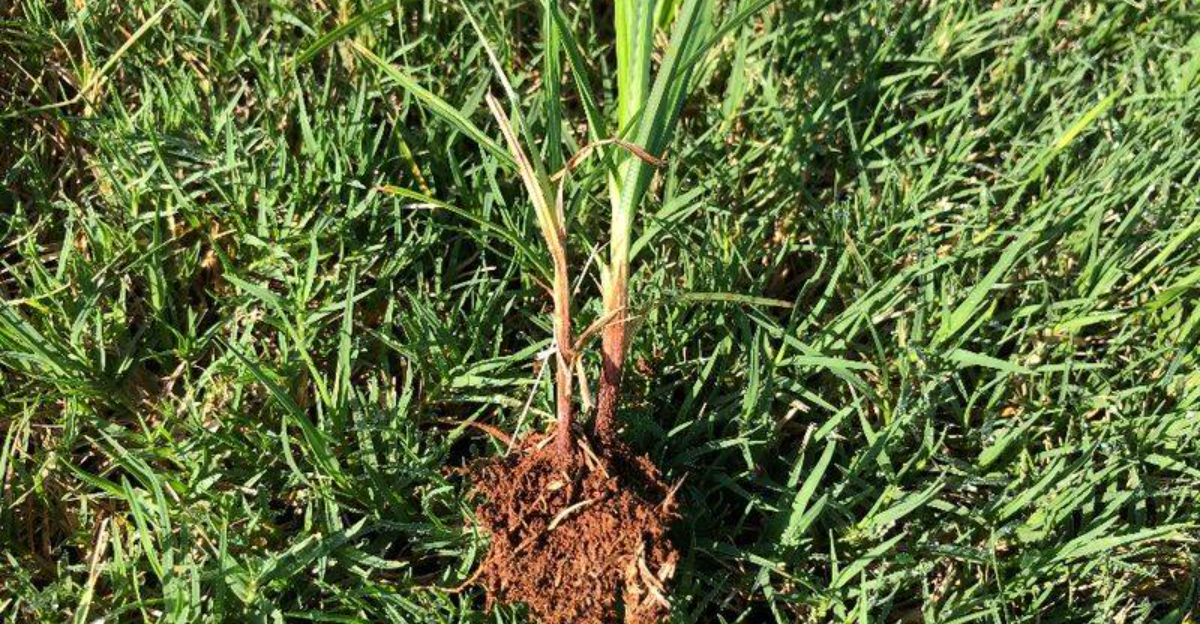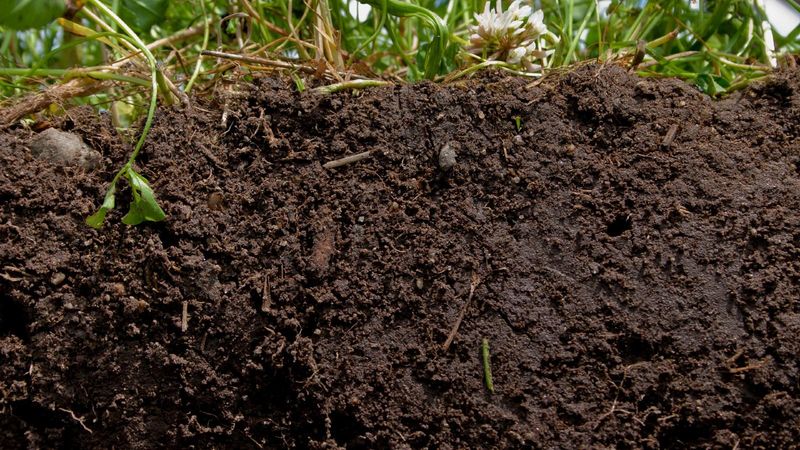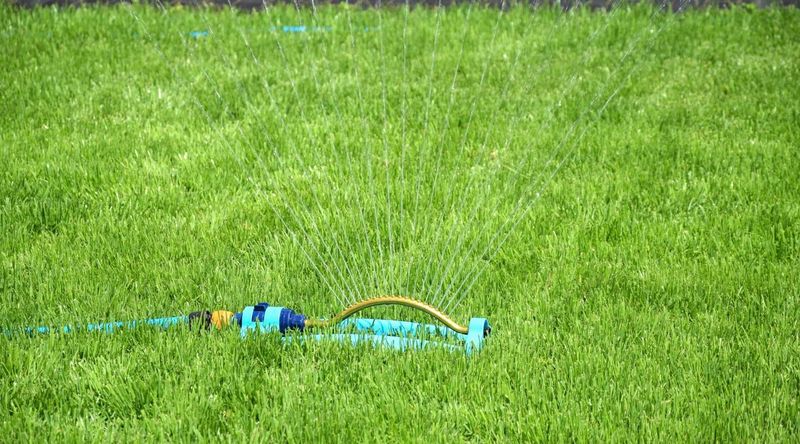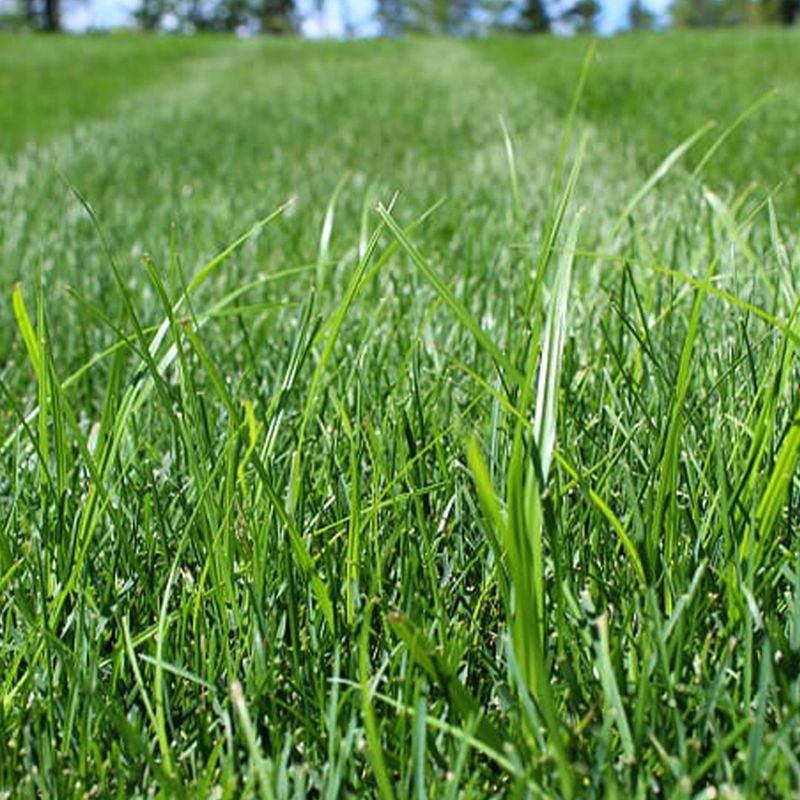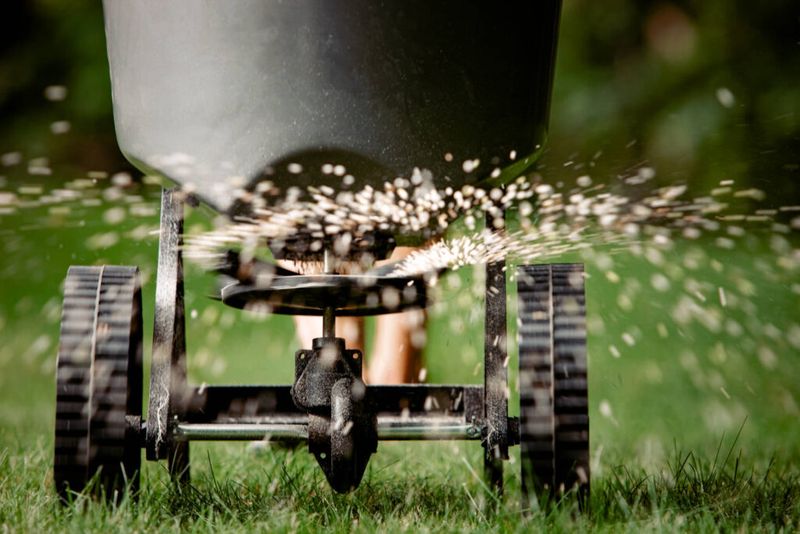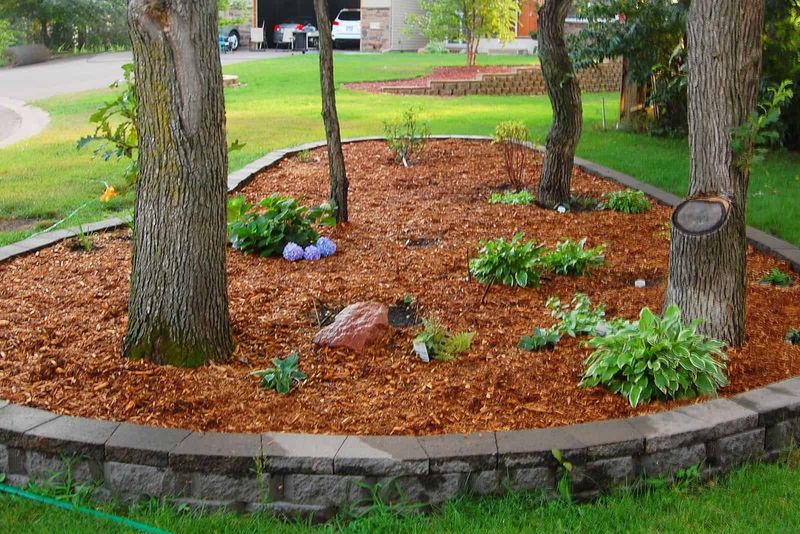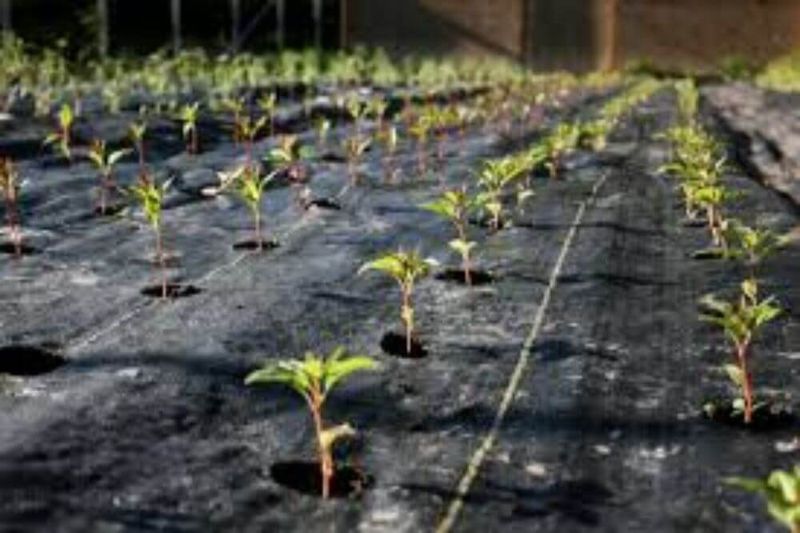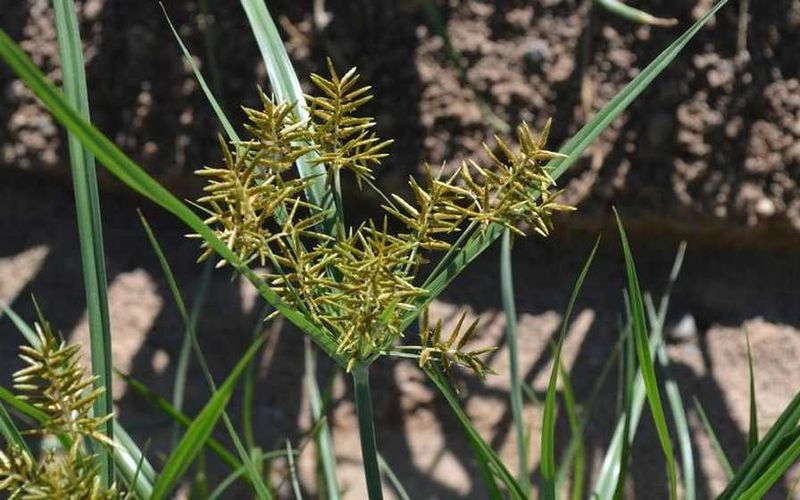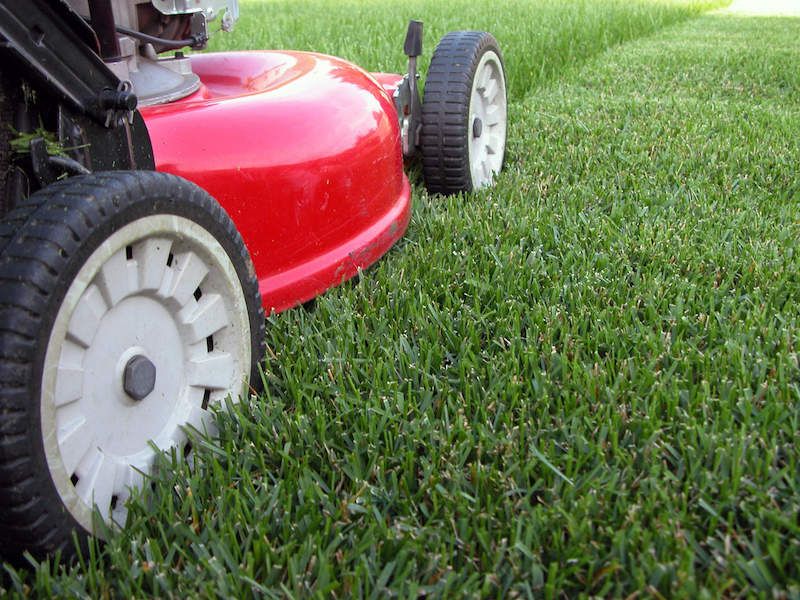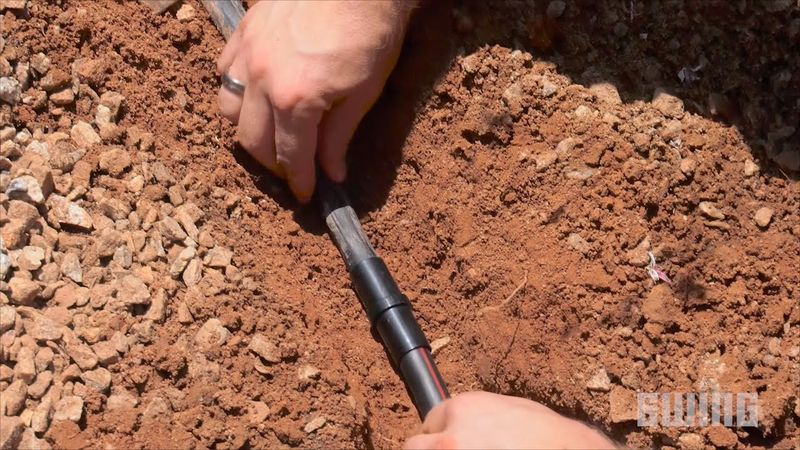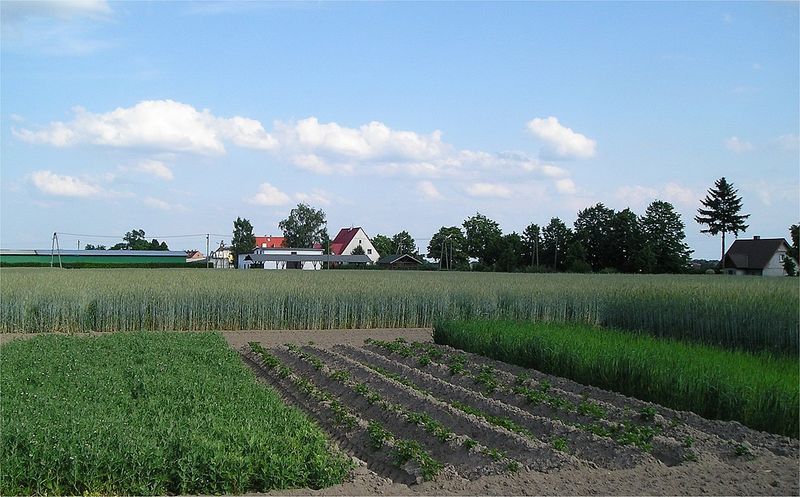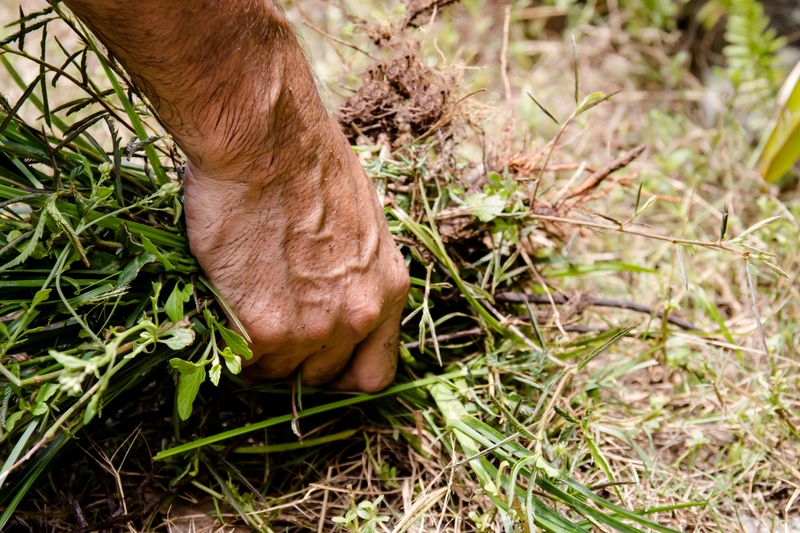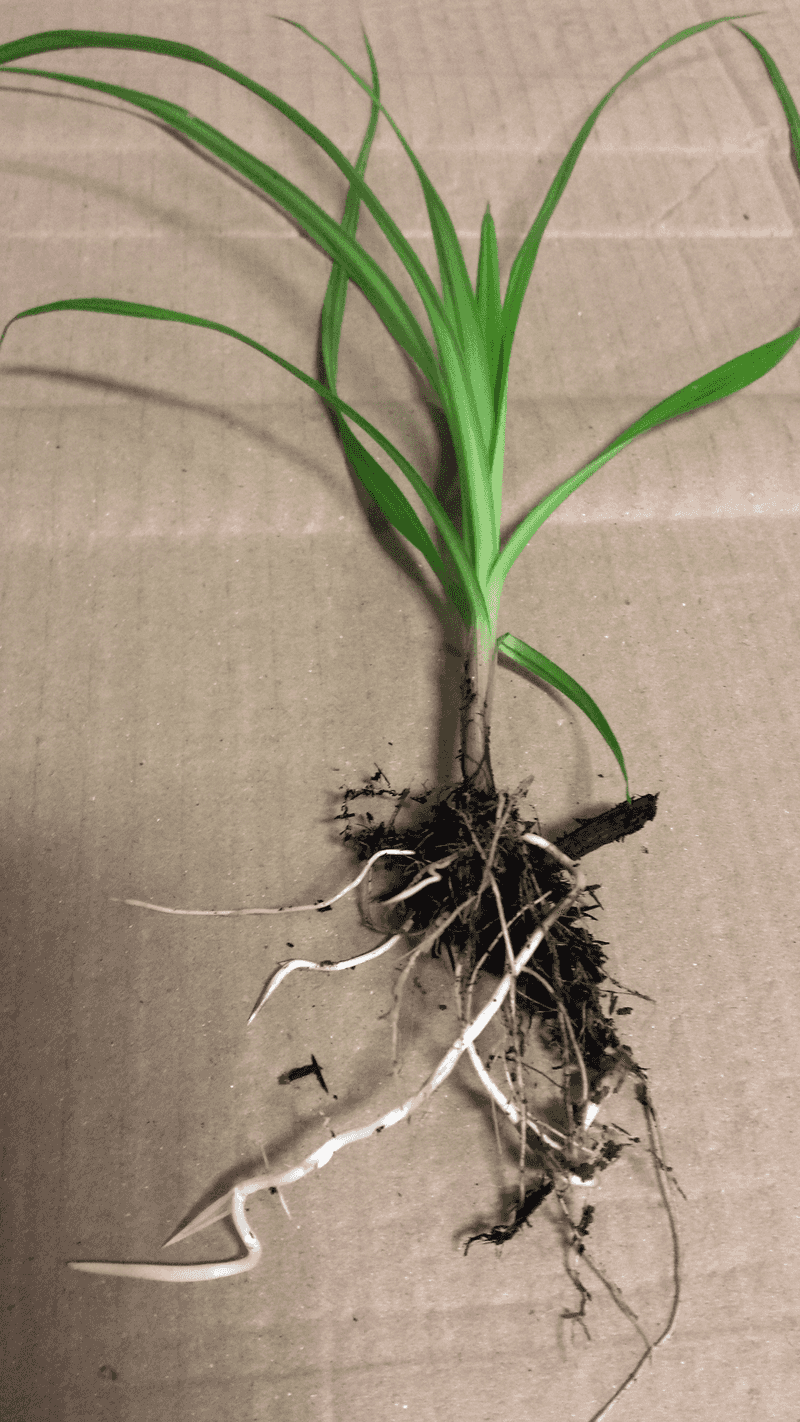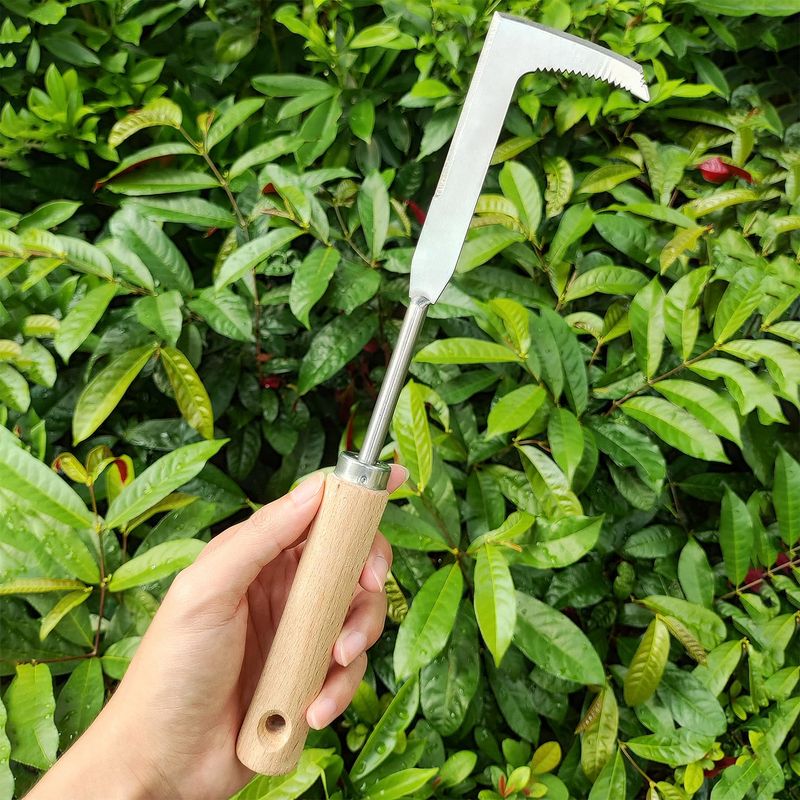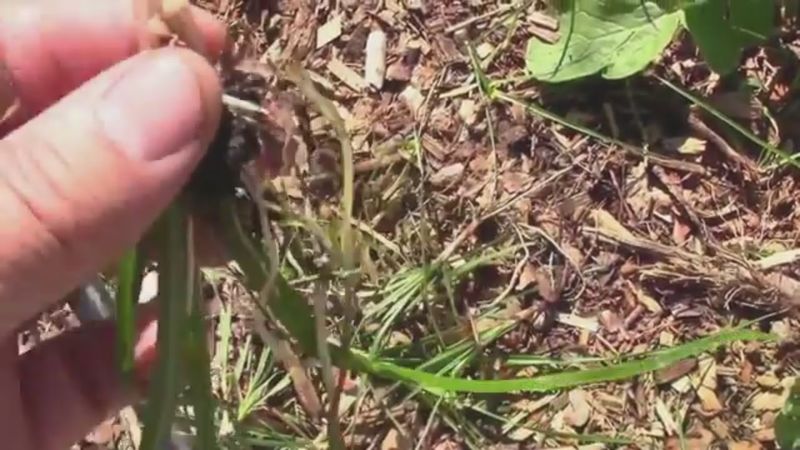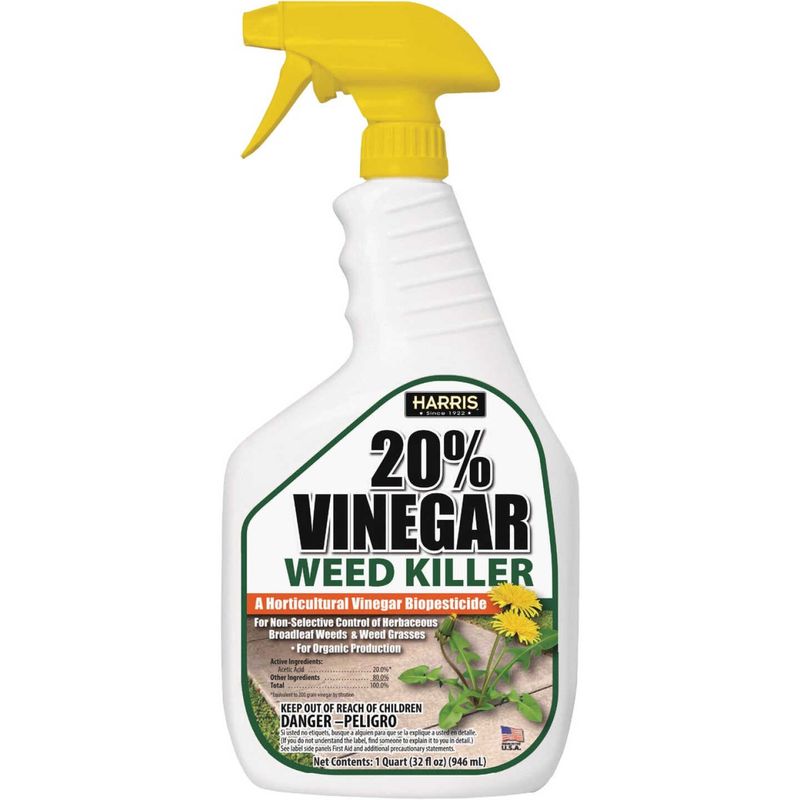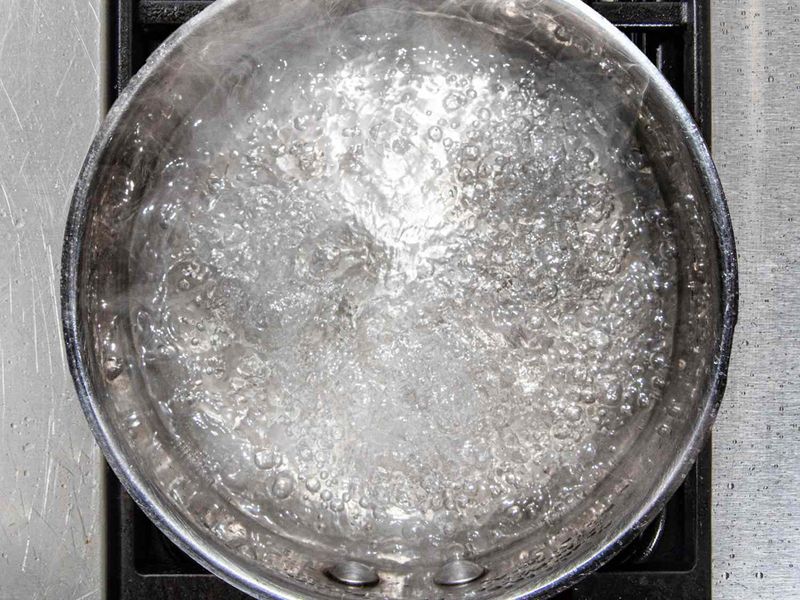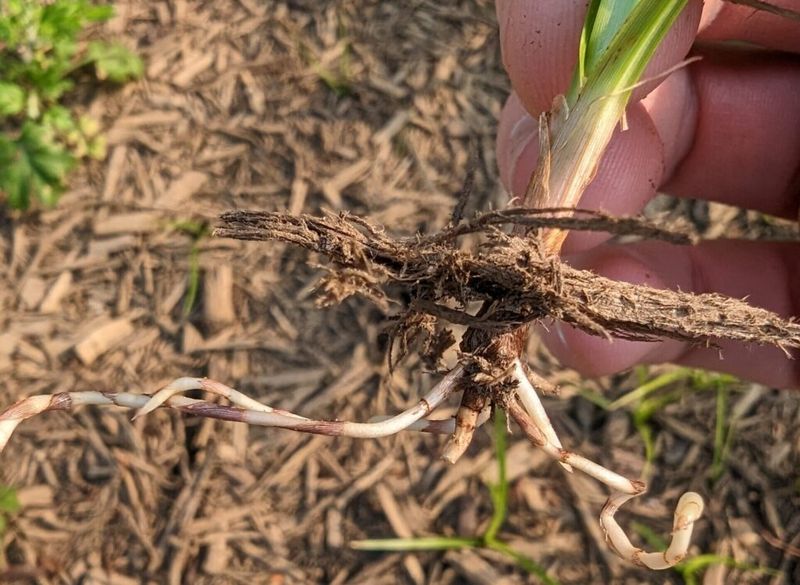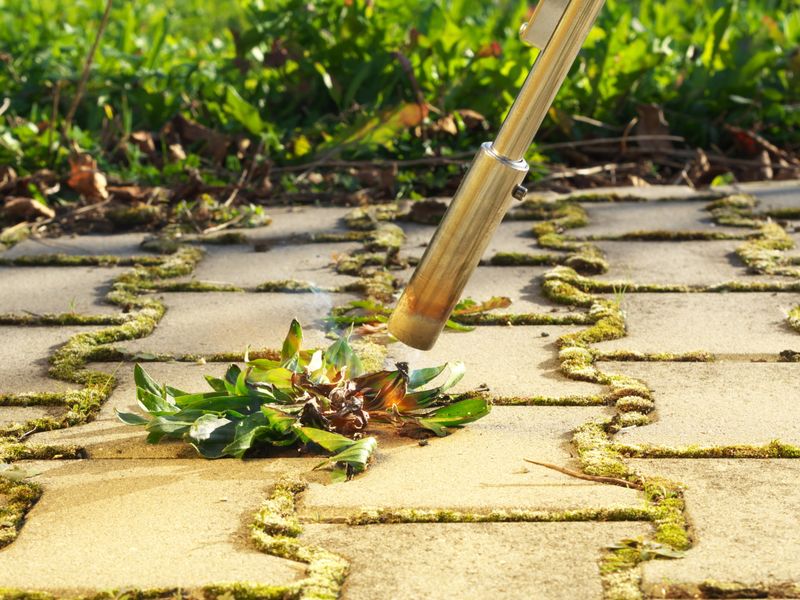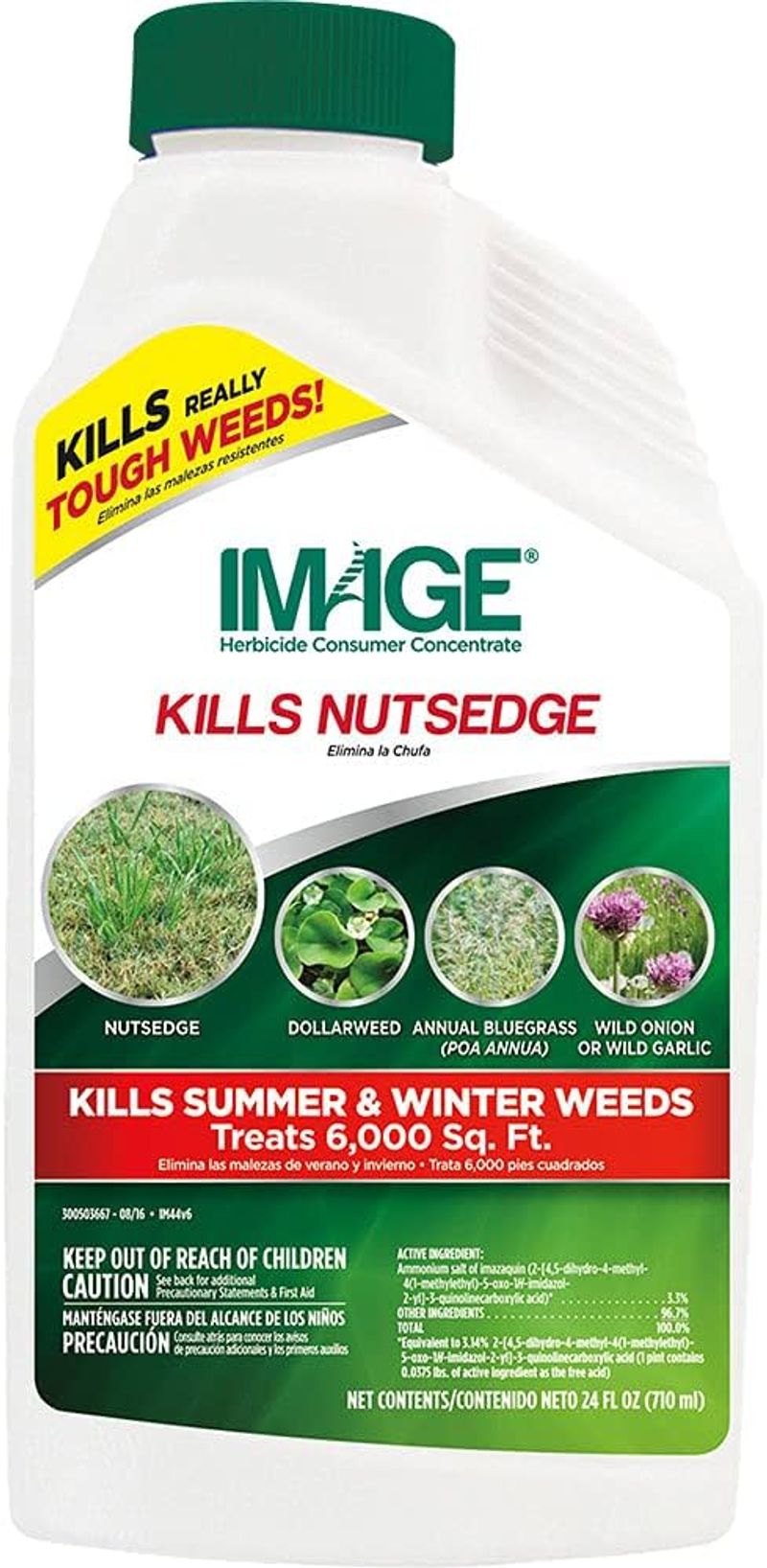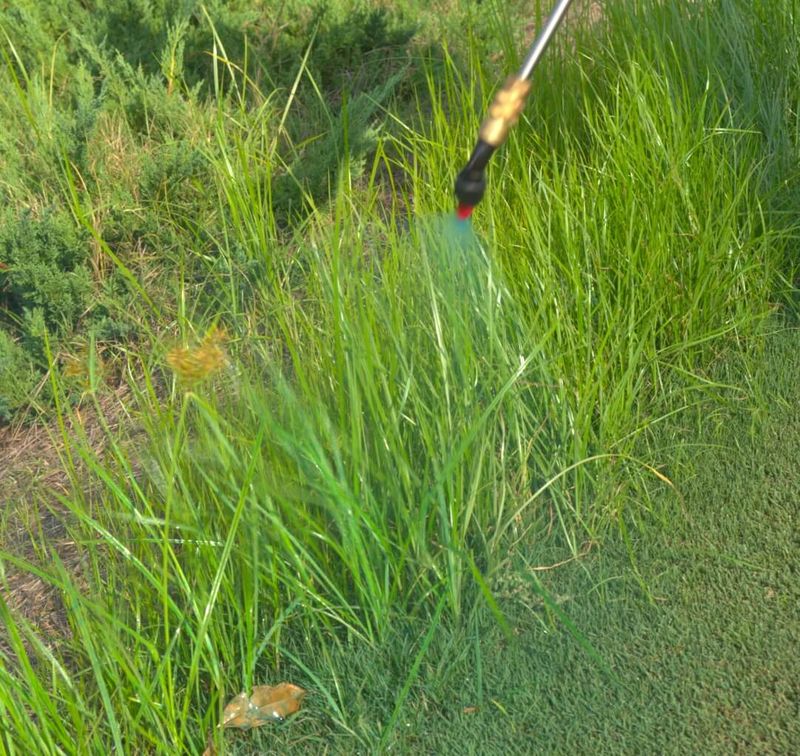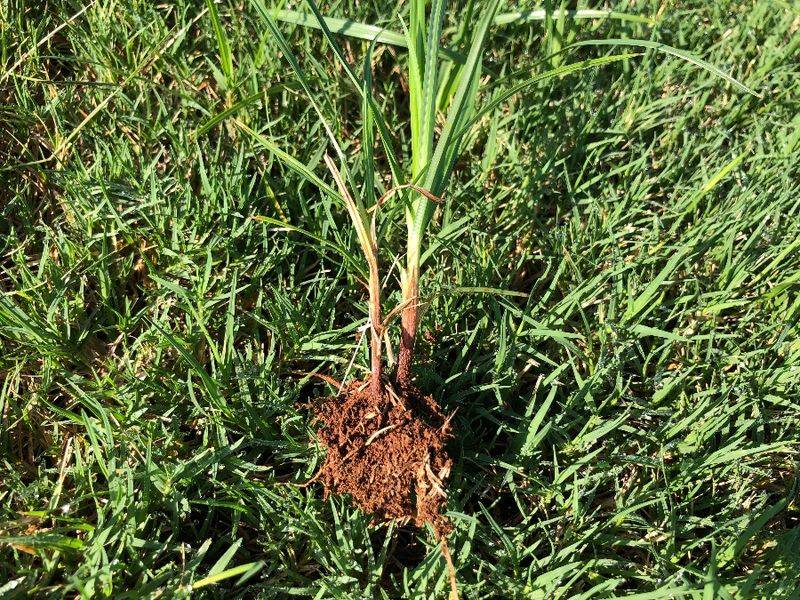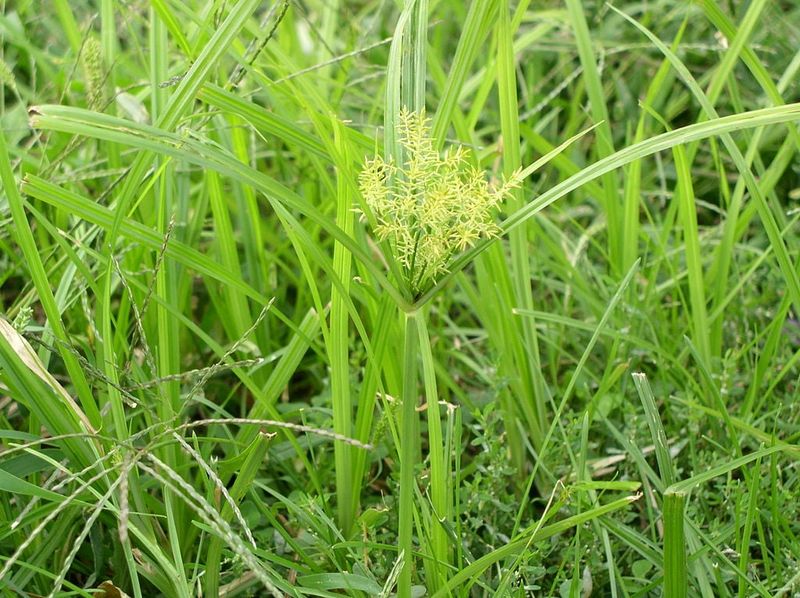Nutsedge is a persistent and often frustrating weed that plagues lawns and gardens. Known for its aggressive nature and ability to thrive in wet conditions, it can quickly take over if not managed properly.
Whether you’re dealing with this pesky invader in your backyard or garden beds, there’s hope. This guide offers 24 proven strategies to eliminate nutsedge and reclaim your outdoor space.
From improving soil drainage to using herbicides specifically formulated for nutsedge, you’ll find actionable and effective solutions. Let’s explore these methods to help you maintain a beautiful, weed-free yard.
1. Improve Soil Drainage
Nutsedge loves wet, compacted soil, making it crucial to improve drainage for effective control. Start by aerating your soil to alleviate compaction. Adding organic matter like compost can enhance soil texture and drainage.
Consider installing a French drain in particularly troublesome areas. These steps not only deter nutsedge but also promote healthier grass growth. Healthy, well-drained soil is less inviting for weeds like nutsedge.
By focusing on drainage, you’re setting the stage for a lawn that’s resilient and vibrant.
2. Water Deeply and Infrequently
Shallow watering can create an ideal environment for nutsedge to thrive. Instead, water your lawn deeply but less frequently. This encourages deeper root growth for your grass, helping it compete against weeds.
Aim for watering once or twice a week, adjusting based on the weather and soil type. Deep watering supports a robust lawn that naturally suppresses nutsedge.
By adopting this watering strategy, you’re empowering your lawn to outpace invasive weeds, while conserving water and maintaining lush greenery.
3. Mow Higher
Keeping your grass taller is a simple way to suppress nutsedge. Taller grass shades the soil, reducing sunlight exposure that nutsedge needs to grow. Set your mower blade to a higher setting, ideally 3 inches or more.
This helps your lawn become denser, naturally crowding out weeds. Regularly mowing at this height encourages a healthy, thick lawn. It’s a straightforward method that works in harmony with nature, allowing your lawn to flourish while keeping nutsedge at bay.
4. Fertilize Properly
A well-fertilized lawn can crowd out nutsedge by fostering thick, healthy grass growth. Choose a balanced, slow-release fertilizer that meets your grass type’s specific needs. Timing is crucial—fertilize during the growing season to maximize effectiveness.
Proper fertilization strengthens your lawn, making it more competitive against weeds. This approach not only combats nutsedge but enhances overall lawn health. By nourishing your grass, you’re building a natural defense system against invasive species.
5. Mulch Your Garden Beds
Mulching is a powerful tool in the battle against nutsedge. By applying a thick layer of mulch, you block sunlight, preventing nutsedge from sprouting. Organic mulches like wood chips or straw are effective and environmentally friendly.
Ensure the mulch layer is at least 3 inches thick for optimal results. This technique not only suppresses weeds but also retains soil moisture and enriches the soil as it decomposes. Mulching is a win-win strategy for maintaining beautiful, weed-free garden beds.
6. Use Landscape Fabric
Landscape fabric is an excellent barrier against nutsedge. Place it under a layer of mulch to enhance its effectiveness. This fabric prevents weeds from reaching the surface, while allowing water and nutrients to penetrate.
Installation is straightforward: cut the fabric to fit your garden bed, secure it, and cover with mulch. This approach not only curtails nutsedge growth but also reduces maintenance efforts. Utilizing landscape fabric is a proactive way to keep your garden pristine and weed-free.
7. Avoid Tilling Infested Areas
Tilling can inadvertently spread nutsedge tubers, exacerbating the problem. Instead, focus on surface-level interventions like hand-pulling or using selective herbicides. If tilling is necessary, do so with caution, ensuring any visible tubers are removed.
This careful approach prevents the accidental propagation of nutsedge, keeping infestations in check. By minimizing soil disturbance, you’re maintaining the balance of your garden’s ecosystem. This strategy helps curb the spread of nutsedge while preserving soil health.
8. Maintain a Thick Lawn
A dense lawn is a formidable opponent against nutsedge. Over-seeding can fill in bare spots, creating a continuous carpet of grass. Choose grass varieties suited to your climate and soil type for best results.
Regular maintenance, like watering and fertilizing, supports a thick, healthy lawn. A dense turf naturally suppresses weeds by limiting the space available for nutsedge to grow. This approach not only deters nutsedge but enhances the aesthetic appeal of your lawn.
9. Fix Leaky Irrigation Systems
Leaky irrigation systems create moist conditions perfect for nutsedge. Inspect your system regularly, checking for leaks or inefficient sprinklers. Repair or replace faulty parts to ensure water is delivered where needed, without excess.
By controlling moisture levels, you’re discouraging nutsedge growth and promoting a healthier lawn. Efficient irrigation not only saves water but also contributes to a robust, weed-resistant turf. This proactive measure keeps nutsedge at bay while optimizing your lawn’s health.
10. Rotate Crops
Crop rotation is a strategic way to manage nutsedge in gardens. By changing the types of crops you plant each season, you disrupt the lifecycle of weeds. This practice reduces the chances of nutsedge establishing itself long-term.
Plan your rotation based on crop families, ensuring diversity in your garden. Crop rotation not only combats nutsedge but also improves soil health and productivity. It’s a sustainable approach that benefits both your garden and reduces weed challenges.
11. Hand Pull Young Plants
Hand-pulling is effective for controlling young nutsedge plants before they develop tubers. For best results, remove plants when the soil is moist, as this allows for easier extraction. Be sure to pull gently, ensuring the entire root system is removed.
This method is labor-intensive but rewarding, especially for small infestations. By removing nutsedge manually, you’re preventing it from spreading and establishing a foothold in your garden. This hands-on approach keeps your garden under control and free from invasive weeds.
12. Dig Carefully to Remove Nutlets
For persistent nutsedge issues, digging out the nutlets is essential. Use a small spade or trowel to carefully excavate the surrounding soil. Precision is key, as nutlets can regenerate if left behind.
This method requires patience and attention to detail but is effective in reducing nutsedge presence. By targeting the source, you’re addressing the root of the problem, literally. This thorough strategy ensures long-term control, allowing your garden to thrive without the threat of nutsedge.
13. Use a Weed Knife or Weeding Tool
Specialized tools, like a weed knife, are invaluable for removing nutsedge. These tools allow for precise extraction, targeting the root system directly. Use them to carefully cut around the base of the plant and pull out the entire weed.
This approach minimizes soil disruption while effectively removing nutsedge. Investing in quality weeding tools can make this task easier and more efficient. By using the right tools, you’re enhancing your weed control strategy and maintaining a tidy garden.
14. Solarize the Soil
Solarization uses the sun’s heat to eradicate nutsedge. Cover infested areas with clear plastic during the hottest months to trap heat. This process raises soil temperature, killing weeds and seeds.
Ensure the plastic is tightly secured to maximize heat retention. This eco-friendly method not only controls nutsedge but also sterilizes the soil, reducing other weed populations.
Solarization is an effective, chemical-free option for those seeking sustainable garden solutions. It’s a natural way to reclaim your garden from pesky weeds.
15. Smother with Cardboard or Newspaper
Smothering nutsedge with cardboard or newspaper is a simple, effective strategy. Lay the material over infested areas and cover with mulch to block sunlight. This suffocates the weeds, preventing growth and spread.
Use several layers for best results, ensuring complete coverage. This method also enriches the soil as the material decomposes. Smothering is an excellent option for those looking to control nutsedge without chemicals. It’s a convenient, sustainable way to maintain a clean, healthy garden.
16. Vinegar Spray (High Strength)
High-strength vinegar can be used as a natural herbicide against nutsedge. Apply it carefully as a spot treatment, avoiding contact with desirable plants. Vinegar’s acidity disrupts weed growth, but use caution, as it can damage nearby grass.
For optimal results, apply on a sunny day, allowing the sun to enhance its effectiveness. This method is suitable for small infestations and offers a natural alternative to chemical herbicides. It’s a straightforward option for those looking to reduce nutsedge naturally and efficiently.
17. Boiling Water
Boiling water is a simple, eco-friendly way to kill nutsedge in garden paths or cracks. Heat water to a boil and carefully pour it over the weeds, ensuring thorough coverage. This method kills the plant by cooking it, but it’s most effective for small, isolated infestations.
Use caution to avoid harming nearby plants or soil organisms. Boiling water is an excellent choice for those seeking chemical-free weed control. It’s a practical method for keeping hard-to-reach areas clear of nutsedge.
18. Corn Gluten Meal
Corn gluten meal acts as a pre-emergent herbicide, preventing nutsedge seeds from germinating. Spread it evenly over your lawn to create a protective barrier. While less effective for established tubers, it’s useful for preventing future infestations. Apply during the growing season for maximum impact.
This natural method not only controls nutsedge but also provides nitrogen, benefiting your lawn. By incorporating corn gluten meal into your maintenance routine, you’re taking proactive steps to curb weed growth and enrich your soil.
19. Molasses Soil Treatment
Molasses can alter soil biology, discouraging nutsedge growth. Mix a molasses solution and apply it to the affected area. This treatment enhances beneficial microbial activity, creating conditions less favorable for weeds. While not a quick fix, it supports long-term soil health and can deter nutsedge over time.
This method is ideal for gardeners seeking natural, holistic solutions. By using molasses, you’re nurturing your soil’s ecosystem, promoting a healthy, balanced garden environment. It’s a gentle, sustainable approach to controlling nutsedge.
20. Flame Weeder
A flame weeder offers a unique way to tackle nutsedge, especially in non-flammable areas like driveways. This tool uses heat to kill weeds by disrupting their cellular structure. Apply it carefully, focusing on the nutsedge to avoid unnecessary damage.
It’s an effective, chemical-free option for those dealing with persistent weeds. Flame weeding requires caution and precision, but it’s a powerful method for managing nutsedge. This approach offers a satisfying, environmentally friendly way to reclaim hard surfaces from invasive growth.
21. Use a Selective Herbicide for Nutsedge
Selective herbicides are formulated specifically for nutsedge control. Look for products containing Halosulfuron, Sulfentrazone, or Imazosulfuron. Apply when nutsedge is young and actively growing for best results. Follow label instructions carefully to avoid harming desirable plants.
These herbicides offer a targeted solution, effectively managing nutsedge without damaging your lawn. By choosing the right product, you’re ensuring efficient, focused weed control. This chemical option provides a reliable means of tackling stubborn nutsedge infestations.
22. Apply Herbicide When Weeds Are Young
Timing is crucial when using herbicides for nutsedge control. Apply when weeds are young and actively growing, typically in the spring or early summer. This ensures the herbicide is absorbed effectively, targeting the weed at its most vulnerable stage.
Follow instructions for dosage and safety, maximizing the treatment’s impact. Timely application not only improves results but also minimizes the need for repeat treatments. By acting swiftly, you’re gaining the upper hand in the battle against nutsedge.
23. Repeat Treatments as Needed
Nutsedge often requires multiple herbicide applications for effective control. Monitor your lawn and reapply as necessary, following product instructions. Persistence is key; repeated treatments help weaken and eventually eliminate nutsedge.
This ongoing effort ensures your lawn remains healthy and weed-free. By staying vigilant and proactive, you’re maintaining control over nutsedge. Consistency in treatment not only manages the current infestation but also prevents future outbreaks, safeguarding your lawn’s beauty.
24. Don’t Mow Immediately After Spraying
After applying herbicide, avoid mowing to allow absorption into the nutsedge. This ensures the treatment reaches the root system, enhancing effectiveness. Wait at least 48 hours before mowing, as this gives the herbicide time to work.
By following this guideline, you maximize the impact of your treatment, reducing the need for future applications. This simple adjustment in your lawn care routine can significantly improve results. Ensuring proper absorption helps you maintain a pristine, nutsedge-free lawn.
